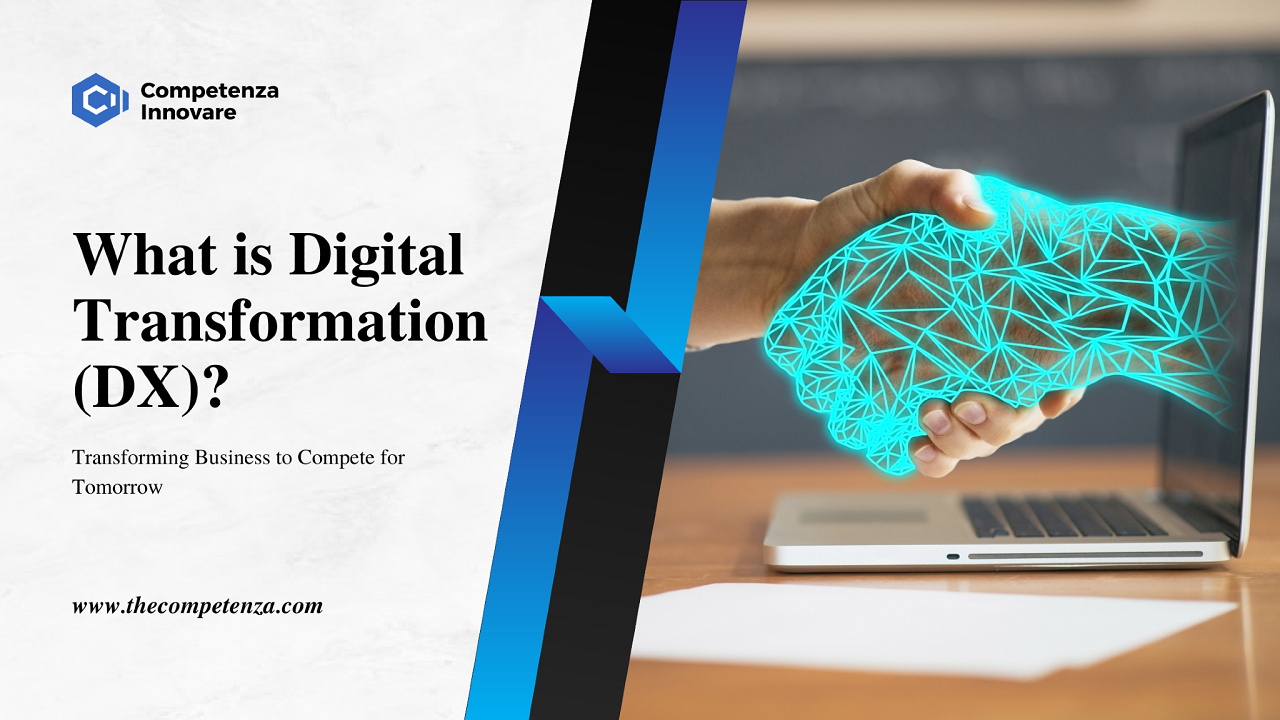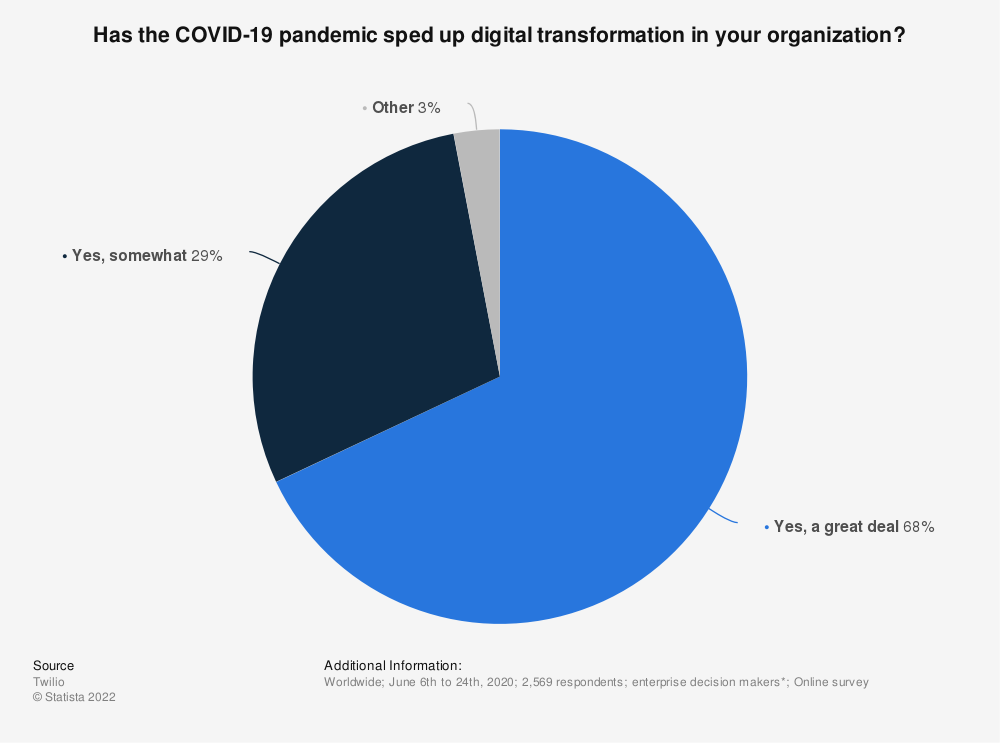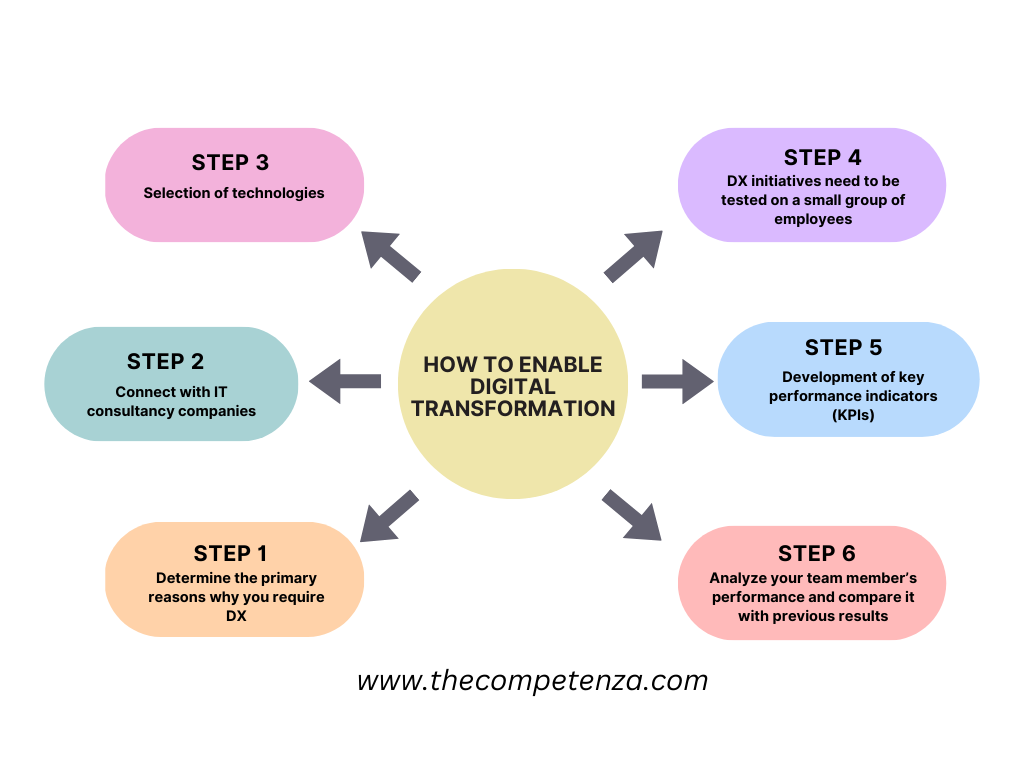
From the business perspective, “digital transformation” (DX) means adopting cutting-edge technologies to substitute existing business operations with technologically enabled practices.
In reality, accelerating digital transformation in every area has become a prime objective of industries. When an organization attempts to modify its customer experiences (CX) or business processes through digital transformation, then it helps in gaining a competitive advantage.
For example: previously, MNCs used to hire 1000+ agents for handling customer calls and emails. Now, MNCs are implementing Chabot’s to reduce their customer service agents and improve the customer experience.
This article will be going to clear all your doubts regarding “what is digital transformation” and “why your business needs it too”?
Significance of Digital Transformation
Digital transformation can provide competitive advantages to an organization, but not all companies are engaged in it to only gain competitive advantages. There are plenty of other reasons that showcase the importance of digital transformation.
#1: Successful digital transformations help in overcoming business survival-related issues.
#2: It (business transformation) unlocks the hidden potential of employees.
#3: It helps companies in accomplishing dynamic customer expectations.
#4: It limits human errors.
#5: It encourages collaboration among employees and improves team communication practices.
#6: In the digital age, threats of cyberattacks are intermittent and proper implementation of digital technology provides well-versed measures to prevent cyberattacks.
Digital Transformation Strategy
As per the official data of Research and Markets, the global digital business & transformation is expected to grow at a CAGR of 16.5% till the year 2025. In the year 2020, the market of business transformation was valued at $ 469.8 Billion and it will be reached $ 1009.8 Billion by the year 2025.
A short and long-term roadmap for digital transformation (DX) is essential for companies to thrive in dynamic market conditions. However, the execution of the DX is far more complex when developing the plan for DX.
At the global level, the COVID-19 pandemic increased the tech adoption rate:

Focusing on the below areas will help you in forming a proper DX strategy:
1. Focus on transforming your business transformation with the technological changes:
♦ Conduct internal organizational research in your company to see the actual benefits that you can accomplish with the DX.
♦ Remember to always implement those technologies that will enable you to accomplish your future goals in a minimum amount of time and with a cost-effective approach.
2. Customer expectations:
Customer expectations are dynamic and your business needs modern engineering capabilities to fulfill those expectations. Digitalization helps companies to increase their customer retention and satisfaction rate.
3. Data & Analytics:
Data helps in figuring out the purchasing pattern of the customers. Not only this, but with the use of data, companies also figure out their business loopholes. So, enable digital transformation to make informed and data-driven decisions.
4. Working place culture:
♦ DX helps in automating various processes and it can even reduce the workload of your employees.
♦ There is a high probability that your workforce can be resistant to change.
♦ So, you need to develop a positive mindset in your workforce to welcome new technologically enabled culture in your existing business models.
How to Enable Digital Transformation

Below are the 6 key essential steps for the proper implementation of digital transformation:
Step 1: Determine the primary reasons why you require DX:
Workforces in your company need to be on the same page regarding the actual business reasons for DX. You can take use of the “S.M.A.R.T” goal-planning method in this step.
Step 2: Connect with IT consultancy companies:
IT consultancy companies will help you in implementing new technological changes through their guidance and expertise. For example, you can consult with Competenza Innovare for leveraging digital transformation in your organization. They are specialized in bringing new innovations through cutting-edge technologies such as ASP.net development, AI-enabled tools, and many more.
Step 3: Selection of technologies:
Different areas of digital transformation run on diverse technologies. For example:
♦ To automate supply chain functions: Cloud Computing, Automated Picking Systems (APS).
♦ For prediction and business analytics: Machine Learning.
♦ For handling remote work practices: use Project Management Systems (PMS).
♦ For automating business operations: use Artificial Intelligence (AI).
Step 4: Digital transformation initiatives need to be tested on a small group of employees:
If there are 100 employees in your company then first test the technology on as low as 10 employees – record their working patterns and analyze whether business outcomes get improved or decreased. If you have experienced positive business results then you can scale up your technology and implement it in the next group of employees.
Step 5: Development of key performance indicators (KPIs):
KPIs will act as a progress card to help you in analyzing about your status to achieve DX goals. With KPIs, you can check how your current business performance gets influenced by digital transformation.
For example, KPIs for analyzing DX’s impact on the performance are as follows:
♦ Change in the monthly sales volume.
♦ Change in sales productivity.
♦ Change in the ratio of the employee’s performance
♦ Change in the ratio of the revenue growth per client.
Step 6: Analyze your team member’s performance and compare it with previous results:
With the results of KPIs, you can compare the current performance of your employees with the expected performance.
Conclusion
Digital transformation helps an organization to effectively empower their current business operations by reducing the working load of their workforces, enhancing their client satisfaction, etc.
Although, there are the following main areas that come into the picture before implementing DX – such as type of business model, organizational structure, current technology, leadership style, and many more.
After COVID-19, many companies are aiming toward the implementation of next-generational technologies such as artificial intelligence (AI), machine learning (ML), cloud computing, and many more.
FAQs
What will be the cost of the digital transformation?
The cost of the digital transformation depends upon your business requirements and current business operations. Consult with IT business consultants to know the estimated price quotations.
Does digital transformation provide a guarantee for success?
In reality, digital transformation can only enhance your probability of success. However, if you will not adopt digital transformation then one thing is sure your competitors will always be going to stay ahead of your business.
Which current technologies incorporate the high potential to increase business success?
♦ Blockchain.
♦ Digital Twins.
♦ Internet of Things (IoT).



